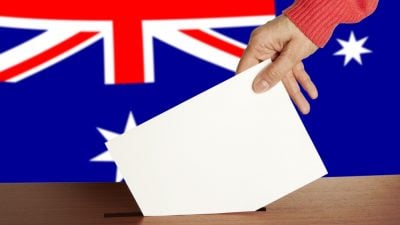Australian Disinformation Wonderland: The Federal Election 2022

All elections are filled with the half-truths, mistruths and full-fledged lies. Victory is rarely bought on a platform of complete honesty. But the road to the current Australian federal election has been potholed by more deception than most. This is bound to happen when policy platforms are weak and rickety, leaving the opponents large scope to undermine each other. The personal prevails over the substantive; ideas play little to no role.
Much of the influence of misinformation and its more aggressive twin, disinformation, is given a legendary status ahead of time. Commentaries abound about how to spot “fake news” from outlets that have themselves been prone to promote counterfeit material.
A study commissioned by Digital security and privacy company Avast filled electors with little confidence about either the content of news or their talents in spotting irregularities and fictions. 38 percent of those surveyed revealed they were not confident in identifying fake news online. The age group between 18-24 were said to be the least confident.
Misinformation has a tendency to multiply and amplify in the wildfire environs of the Internet. “In recent research,” claimed Avast security expert Stephen Ko, “our AI team found that 17.9 percent of hyperlinks of misinformation sites link to other misinformation domains. If users visit a misinformation site, the risk is higher that they end up in a rabbit hole of misinformation sites.” His advice, resembling those cautionary words of an impatient parent to an inattentive child, is to check such matters as the publication date. News should, he remarked, be “current”.
The Australian Electoral Commission has also gone out on a limb in establishing what it calls a “disinformation register”. Doing so comes with a caveat. “The AEC is not the arbiter of truth regarding political communication and does not seek to censor political debate in any way.” A fine objective, except that the AEC is also authoritative in pointing out that, “when it comes to the election process we conduct, we’re the experts and we’re active in defending Australia’s democracy.”
A list of “prominent pieces of disinformation” follows, though the actual source is not overly specific beyond the platform. The first example: “The AEC has sent multiple copies of unsolicited postal votes to a single voter proving voter fraud occurs.” The unsurprising source: Facebook.
Others include claims that First Nations people “have been wiped from the electoral roll without their knowledge”; that applications for postal votes “are being submitted and processed for deceased Australians” and “Dominion voting machines will be used and will be ‘rigged’ to favour one of the major political parties.” That old favourite – that the AEC is itself politically aligned – also features.
Various ethnic groups have been the subject of interest in disinformation strategies. The ABC has reported instances of Liberal Party supporters using the WeChat platform to spread falsehoods about a number of Labor supporters and critics of the Morrison government.
Not to be outdone, some Labor supporters have targeted the incumbent Liberal member for the seat of Chisholm, Gladys Liu, the first ethnic Chinese woman to serve a term in the House of Representatives. According to a Facebook page hosted by an ALP branch located in the Queensland electorate of Wright, Liu’s loyalties were malodorously suspect. A post from April 19 insinuated that Liu was potentially linked to a Chinese plot to infiltrate the Australian parliament.
A particularly aggressive campaign of media disinformation has also blown through some seats where independents are running against threatened incumbents. Earlier this month, the New South Wales electorates of Mackellar, Warringah and Hughes woke up to a number of posters with independent candidates branded with the Greens logo. A statement from the Greens leader Adam Bandt made much of the deception, suggesting that there was “a good chance that whoever is behind this has also committed a criminal act.”
In the Melbourne electorate of Kooyong, a simmering campaign alleging the hidden allegiances of independent Monique Ryan has also been marked by the stain of inaccuracy and mistruth. Stickers have emerged at points claiming that a vote for Ryan is a vote for Labor. This has not been helped by an aggressive campaign waged by the Liberal Party and the Murdoch-News Corp cheer squad alleging much the same thing.
Zoe Daniels, running against the Liberal Party’s Tim Wilson in the Victorian seat of Goldstein, expressed dismay in a tweet about voting strategies set to undermine her candidacy. “In a new low, ‘people’ on social media are spreading the lie that it’s only necessary to mark me number 1 for the vote to be valid.” This was a matter of “orchestrated DISINFORMATION,” she capitalised in anger, “designed to cause informal voting.” Every box, she fumed, had to be numbered.
In its response to the message from Daniels, the AEC expressed its own disappointment. “Formality rules are very clear – in addition to them being printed on our ballot papers, our staff will also walk voters through what’s required.” In some cases, it will take more than just a walk through to dispel the miasma of falsehoods that will mark this election as voters cast their ballots.
*
Note to readers: Please click the share buttons above or below. Follow us on Instagram, Twitter and Facebook. Feel free to repost and share widely Global Research articles.
Dr. Binoy Kampmark was a Commonwealth Scholar at Selwyn College, Cambridge. He currently lectures at RMIT University. He is a regular contributor to Global Research and Asia-Pacific Research. Email: [email protected]
This article has been archived for your research. The original version from Global Research can be found here.


